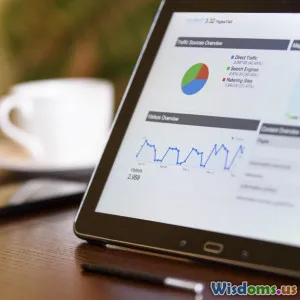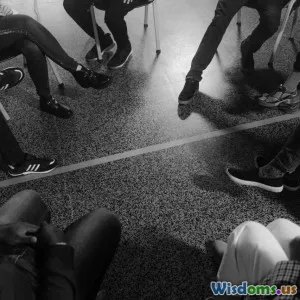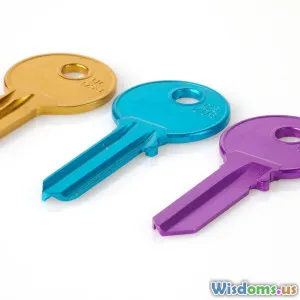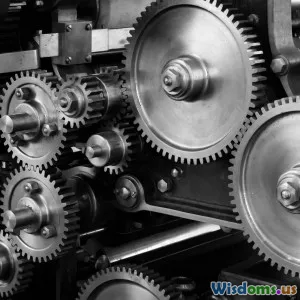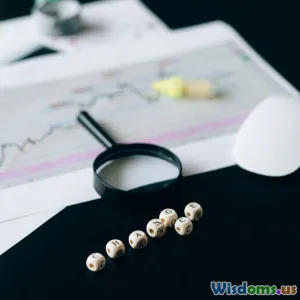
Ten Surprising Uses for Probability in Daily Life
9 min read Discover ten unexpected ways probability shapes everyday decisions and experiences, transforming the ordinary into insightful opportunities. (0 Reviews)
Ten Surprising Uses for Probability in Daily Life
Probability is often viewed as an abstract mathematical concept reserved for classrooms, casinos, or scientific research. However, this powerful tool quietly governs many of our daily activities, shaping the decisions we make without us even realizing it. Delving into the unexpected ways probability influences our lives not only enriches our understanding of the world but empowers us to make smarter choices.
In this article, we explore ten surprising uses for probability in everyday life — from predicting weather to navigating risks — and reveal how embracing probabilistic thinking can transform ordinary experiences into moments of insightful action.
1. Weather Forecasting: Planning Your Day with Confidence
One of the most familiar and valuable real-world applications of probability is weather forecasting. Weather reports often predict the "chance of rain" or "probability of thunderstorms," providing percentage values that represent the likelihood of various weather events.
How it Works:
Meteorologists analyze multiple data sources, including satellite images, temperature readings, humidity levels, and atmospheric pressure, then use probabilistic models to estimate the risk of rain or other conditions. For example, a 40% chance of rain means that, historically, in similar weather setups, it rained 40% of the time.
Real-Life Impact:
Knowing there’s a 25% probability of rain may influence someone to carry an umbrella or not. According to the National Weather Service, this statistical approach enables city services and businesses to prepare effectively, minimizing disruption and maximizing safety.
2. Cooking and Baking: Avoiding Kitchen Catastrophes
It may seem odd, but probability also plays a role in culinary success. Consider baking: the likelihood of a perfect rise or the chance your batch won't burn depends on environmental and procedural factors, some predictable, some probabilistic.
For instance, the risk of overcooking a cake increases if you open the oven too often (introducing temperature fluctuations). Experienced bakers implicitly estimate these risks, balancing patience with attentiveness.
Example:
The Maillard reaction—the browning that develops flavor—is temperature-dependent and time-sensitive. Knowing the probability of over-browning guides cooks to follow specific timing more precisely.
3. Healthcare Decisions: Managing Risks and Treatments
Doctors and patients frequently use probability to make complex healthcare decisions. Risk assessment models calculate probabilities of developing conditions such as heart disease or diabetes based on factors like age, cholesterol levels, and family history.
Evidence-Based Medicine:
For example, the Framingham Risk Score assigns a percent risk for heart attacks over ten years, guiding preventive measures. Patients weighing treatment options often rely on probability-guided outcomes—like the odds a medication will reduce symptoms or cause side effects.
Insight:
Understanding these probabilities leads to informed consent and empowers personalized healthcare rather than one-size-fits-all approaches.
4. Personal Finance: Budgeting Against Uncertainty
Financial planning hinges on estimating the probabilities of various events: job loss, market downturns, or changing interest rates.
Portfolio Risks:
Investment advisors use probability models, such as Monte Carlo simulations, to forecast potential future outcomes, illuminating the chances that a portfolio will meet retirement goals under diverse economic conditions.
Everyday Benefit:
Even on a personal level, probability helps individuals assess decisions like whether purchasing insurance makes sense based on the likelihood of accidents or illness—balancing expected losses against premiums.
5. Dating and Relationships: Navigating Social Probability
Though elusive, probability theory can even illuminate aspects of social life behind dating and relationships.
Algorithms and Matchmaking:
Modern dating apps employ probabilistic models to evaluate compatibility scores derived from preferences, time zones, and behavior patterns—not random choices but statistically informed connections.
Risk vs. Reward:
Deciding when to text, meet in person or commit also involves informal probability estimations of success based on past experiences and social cues.
Psychologist Dr. John Gottman notes that the "magic ratio" of positive to negative interactions predicts relationship longevity, a striking instance of probabilistic observation shaping advice.
6. Gaming and Entertainment: Probabilities Create Thrill
From card games to video games, probability underlies most forms of entertainment involving chance, generating suspense and outcomes.
Example:
In poker, players continually calculate odds of getting a flush or pair to inform betting strategies. Slot machines use random number generators governed by probability to ensure fairness and unpredictability.
Wider Influence:
Game developers leverage probabilistic models to design fair play experiences that keep users engaged yet balanced.
7. Traffic and Commuting: Predicting Delays
Probability models assist in understanding and predicting traffic patterns.
Data-Driven Forecasting:
Navigation apps like Waze or Google Maps analyze historical data, combined with real-time inputs, to estimate the probability that certain routes will encounter delays.
Practical Consequence:
By choosing a less congested, lower-delay probability path, drivers save time and reduce stress—a direct benefit from probabilistic forecasting.
8. Sports and Performance Analysis: Strategy and Success
Athletes and coaches increasingly rely on probability to analyze performance and shape strategy.
Analytics:
For example, in baseball, "expected batting averages" arise from probabilities related to pitch type, fielding chances, and batter tendencies.
Decision Making:
Football coaches might use moment-to-moment win probabilities to decide when to attempt risky plays, guided by data-driven risk assessments across thousands of plays.
9. Job Hunting and Career Planning: Probabilistic Forecasts
When evaluating job offers, or deciding when or where to apply, probability assists in estimating likelihoods of offers, promotion chances, or job market trends.
Employment Economics:
Studies quantify probabilities of unemployment or sector growth influencing decisions.
Personal Optimization:
Tailoring resumes and interview preparation based on perceived probabilities of success maximizes effort-to-outcome ratios.
10. Health and Fitness: Predicting Outcomes for Lifestyle Choices
When we track diet, exercise frequency, or sleep quality, we are implicitly dealing with probabilities—estimating how likely these affect health outcomes.
Wearables and Stats:
Devices monitor data and use probabilistic algorithms to forecast injury risks or improvement rates, helping users optimize habits.
Example:
A study shows that a person increasing daily steps by 2,000 reduces cardiovascular disease risk probabilistically by around 8% over a year.
Conclusion
Probability is no dry academic topic but a vital part of how we understand and interact with the unpredictable world. From mundane decisions like whether to take an umbrella, to life-altering choices in healthcare and finance, probabilistic thinking empowers us to make better-informed, nuanced decisions.
By recognizing and applying probability in the surprising ways discussed, you can unlock a richer appreciation for everyday uncertainties—and convert chance into opportunity.
Embrace probability not just as a concept but as a practical tool to improve your daily life and future outcomes.
References
- National Weather Service: Understanding Forecast Probabilities.
- Framingham Heart Study Risk Scores.
- "The Seven Principles of Making Marriage Work", John Gottman, Ph.D.
- Monte Carlo Simulations in Financial Planning, CFA Institute.
- "Sports Analytics: A Guide for Coaches, Managers, and Other Decision Makers" by Benjamin C. Alamar.
- "Probability and Statistics for Engineering and the Sciences", Jay L. Devore.
Rate the Post
User Reviews
Popular Posts










